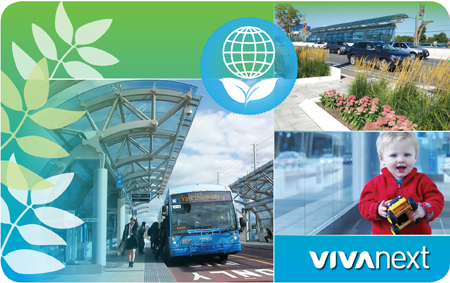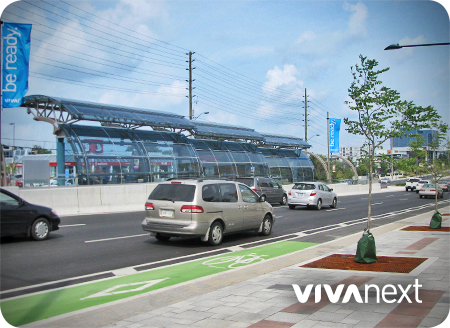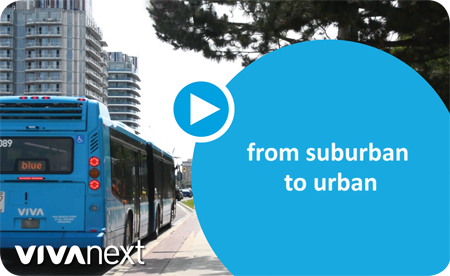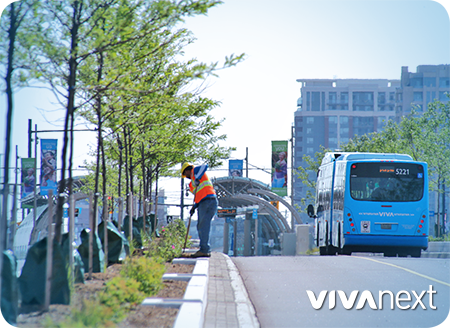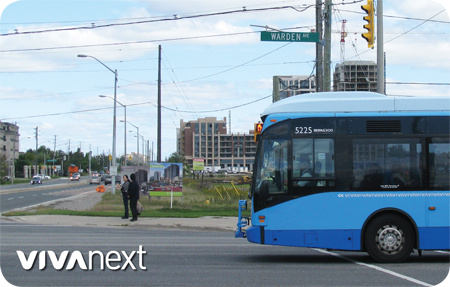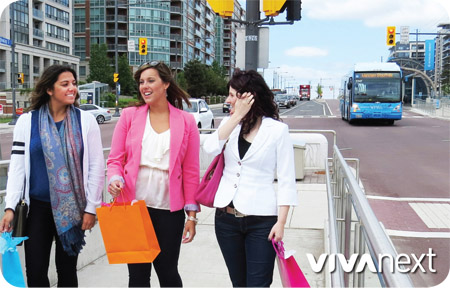…makes the whole world kin. At least that’s what Shakespeare wrote. Everyone wants to help out the environment, even just a little. And the key to making that happen is to weave it into what you do. At vivaNext, we do what we can to help out by incorporating environmental and sustainable standards into what we do.
saving…
When we built a transit facility in Richmond Hill, more than 95% of construction waste was diverted from landfills by recycling. This equals about 582 tonnes, or enough to fill 32 city buses. The facility was built to LEED Silver standards, and includes a rainwater recycling system for the bus wash, which saves about 5.5 million litres each year. When we build rapidways, the old asphalt is taken to local recycling centres, saving valuable construction material for re-use.
planting…
Every rapidway project includes tree-lined sidewalks with special under-sidewalk root systems and tree and shrub species chosen to best suit their location. Including greenery in our communities has important side benefits, including improved health for residents, increased property values, better business outcomes, and reduced energy costs. Each project is unique, and where there are creeks and culverts, our work includes natural restoration, which creates better conditions for wildlife and aquatic species. For a peek at how we connect with nature, check out our video.
building!
And don’t forget the most important thing we’re doing – building rapid transit! Adding sustainable travel choices to our landscape is the most important thing we can do to help our communities thrive. Each bus can replace up to 70 cars and during peak hours along rapidway routes, can be up to 42% faster and certainly reduces emissions. Having fast, reliable transit within walking distance helps support the growth coming to our downtowns in Markham, Newmarket, Vaughan and Richmond Hill – and this central growth helps prevent suburban sprawl.
We’re doing what we can to help the environment and making it part of what we do. Earth Hour is 8:30-9:30pm this Saturday, and we’ll do that little bit extra by powering down and we hope you will too.

